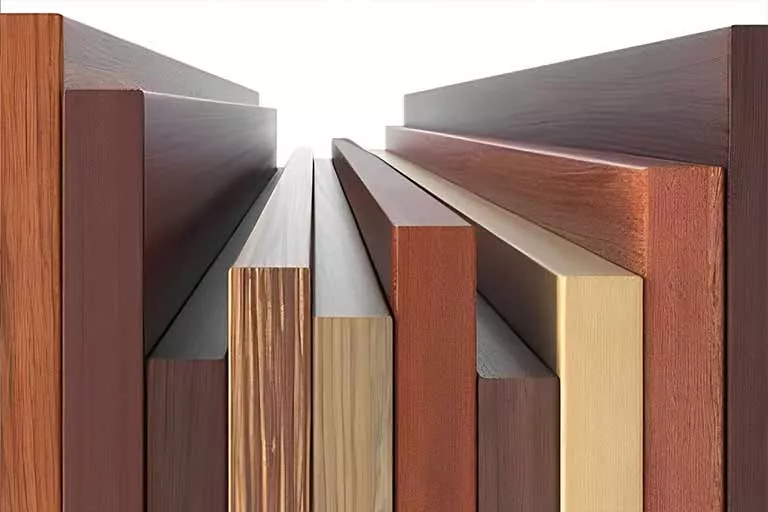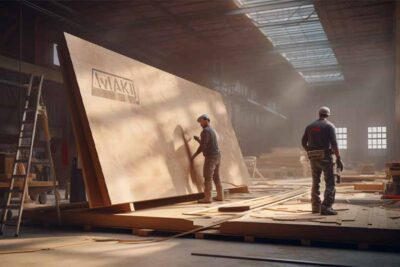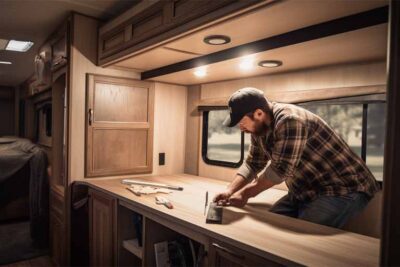
Plywood Grading Guide
Plywood Grading Guide
Plywood is an engineered wood that is fundamental to many construction projects due to its durable structure and low cost. Knowing the types and grades of plywood is very important in planning the work to be done.
PLYWOOD GRADES: SOFT WOOD
There are two classes of softwood plywood production as front and back veneer. Plywood veneer includes 4 kinds; They are classes A, B, C and D.
- Grade A plywood is the highest quality plywood. This class, which is the most expensive, is preferred for valuable projects for visual gain and time saving in application.
- Grade B plywood has minor imperfections, but can be resolved with minor repairs. It is slightly rougher than Class A.
- Grade C plywood has visible defects and knots.
- Grade D Plywood has major flaws and images of knots are quite large. The cheapest type of plywood is this grade.
The first letter given in the plywood grades represents the front side of the plywood, and the second letter represents the back side of the plywood. For example, when you hear of a grade AB plywood, you may know that the front side has a grade A sheet and the back side has a grade B sheet.
PLYWOOD GRADES: HARD WOOD
In this plywood type, the classification system is different from the softwood classification type. Again, letters are used for the front side, but numbers are used for the back side. Classification is made between the letter A and D to classify the front side, while grading is made between 1 and 4 for the reverse side. Grades A and 1 represent the highest quality grade, while grades D and 4 represent the most suitable plywood type.
Structural Uses of Plywood
One of the basic structural materials used in buildings in different ways is plywood. The most important known advantage of structural plywood; Its high dimensional stability and mechanical properties do not change much. In building applications, plywood sheets can be applied in a wide variety of ways thanks to their thermal, biological, acoustic, hygienic and decorative properties.
Another advantage of the plywood material is that its resistance along the length of the board is almost equal to its resistance across its width, and it exhibits a high resistance against the separation of the fasteners and increases the resistance properties by dispersing the defects thanks to its layered structure. Smooth boards can be obtained due to the ease of processing of plywood. Nailing process can be applied even on the edges of plywood, which are known to have high nail and screw holding resistance.
It reduces costs because it allows plywood to be reused in construction form work. Softwood plywood is mostly used for decorative purposes in buildings. It is impossible to come up with a complete list of materials made from hardwood plywood. Examples of applications where hardwood plywood is evaluated are the use of chairs, kitchen and bathroom cabinets, tables, wall panels, chests, computer and television furniture.
In earthquake resistant building design, plywood is preferred as a covering material for shear walls. One of the main problems in buildings damaged by earthquakes; It is a small number of people saved because of the collapse of heavy buildings made entirely of reinforced concrete, because everything inside is crushed and leaves no living space. Due to the heavy weight of the concrete material, post-earthquake rescue works can be carried out with the help of heavy machinery. However, due to the lightness of wooden structures, when damaged by an earthquake, it creates more living space and allows loss of life to be minimized. Rescue works in wooden structures after an earthquake can be supplied immediately with tools such as axes, sledgehammers and hand saws, without waiting for heavy machinery.
Plywood Types and Quality Classes
Plywood by General Appearance
- Plywood by Structure
- Veneer plywood
- Wood core plywood (Plywood)
- Block sheet
- Laminated sheet
- Composite plywood
- Plywood According to Shape and Form
- Flat
- Molded
Plywood by Main Characteristics
- Plywood by Strength
- For use in dry environment
- For use in humid environment
- For outdoor use
- Plywood According to Mechanical Properties
- Plywood by Surface Appearance
- Plywood by Surface Conditions
- Sandless plate
- Sand slab
- Pre-polished sheet
- Coated sheet (decorative coating, resinous film, impregnated paper.)
Plywood According to User Needs
- General purpose plywood
- Plywood produced for special purposes (structure, form work, etc.)
Plywood by Quality
1st Quality Plywood
Both sides of 1st Quality plywood are generally made of flawless veneers and sanded. However, there may be two slight cracks at a maximum of 1/8 of the plywood surface. Beech plywood can also have up to three solid knots up to fifteen millimeters in diameter per square meter.
2nd Quality Plywood
Only one side of the 2nd quality plywood has been sanded and there may be random lines of joints, light coloration, point knots, corrugated parts and tumor places, and two patches per m2 of solid knots up to 25 mm in diameter. There may also be putty-sealed edge cracks 1/5 of the plywood length and 5 mm wide and a small amount of glue stains.
3rd Quality Plywood
In 3rd Quality plywood, at most four of the defects listed below can be collected. Spot knots, fiber twists, discoloration, defective joints, tumor places, cavities and resin sacs, four solid knots up to 25-60 mm in diameter per m2, repaired places, cracks, stripe dents and holes distributed individually, There may be glue stains and overflows and overlaps, overlaps and openings in the interior floors.
4th Quality Plywood
4th Quality plywood has all 3rd Quality defects.
Plywood is a plate that consists of wooden boards glued on top of each other at 90° to each other. These boards, which have the feature of countertop, have a wide area of use in carpentry.





